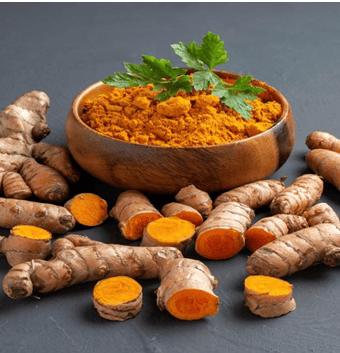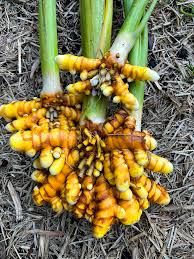Turmeric: The Golden Spice of Life
Turmeric, the vibrant golden spice derived from the rhizome (underground stem) of the Curcuma longa plant, is more than just a culinary ingredient. This member of the ginger family boasts a rich history, a striking color, and a growing body of scientific research highlighting its potential health benefits. Native to South Asia, turmeric has been used for centuries in traditional medicine, as a natural dye, and, of course, as a key component in countless flavorful dishes.




A Vibrant Hue and Warm Flavor
Turmeric's signature characteristic is its intense golden-yellow color, stemming from the powerful compound curcumin. Beyond its visual appeal, turmeric offers a warm, earthy, and slightly bitter flavor, adding depth and complexity to culinary creations.
Culinary Cornerstone
Turmeric is a staple in many cuisines, particularly Indian, Southeast Asian, and Middle Eastern. It's a key ingredient in curries, stews, sauces, and rice dishes, lending both color and flavor. Turmeric is also a crucial component of spice blends like curry powder and garam masala.
Beyond the Kitchen
Turmeric's uses extend far beyond the culinary realm. It has been used as a natural dye for fabrics and cosmetics for centuries. In traditional medicine systems like Ayurveda, turmeric has been valued for its potential therapeutic properties.
The Power of Curcumin
Much of the scientific interest in turmeric focuses on curcumin, its primary active compound. Curcumin has been studied extensively for its potential antioxidant and anti-inflammatory effects. Ongoing research explores its possible role in various health conditions.
A History Rooted in Tradition
Turmeric's history is deeply intertwined with cultural traditions and ancient practices. It has been used in religious ceremonies, traditional medicine, and everyday cooking for generations.
Interesting Facts
Turmeric is a member of the ginger family.
The curcumin content of turmeric varies, with some varieties and preparations containing higher concentrations.
Black pepper enhances the bioavailability of curcumin, making it easier for the body to absorb.
Turmeric is often used in religious ceremonies and cultural practices.
From its vibrant color and earthy flavor to its potential health benefits and rich history, turmeric is a truly remarkable spice, adding a touch of gold to our food and our lives.






